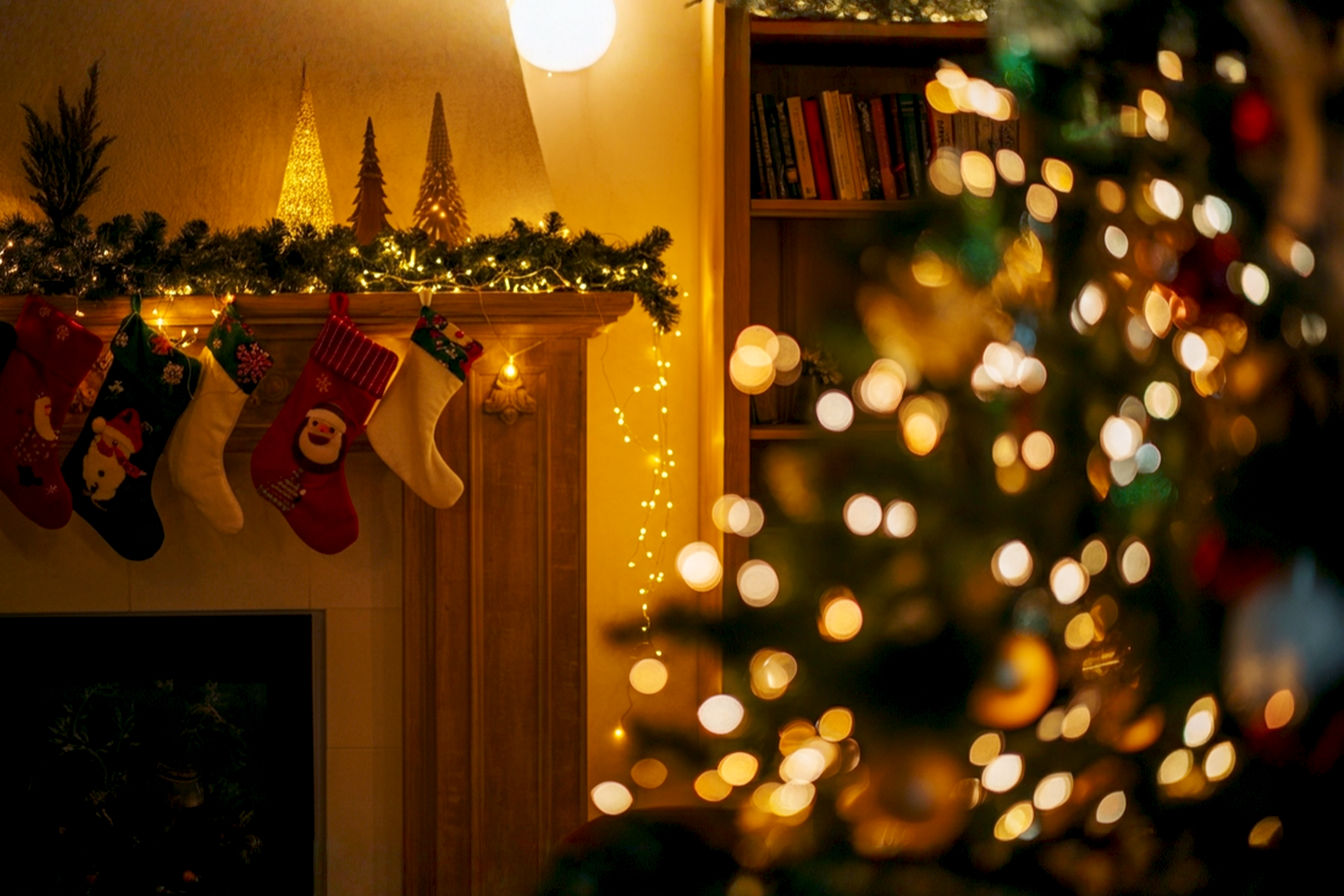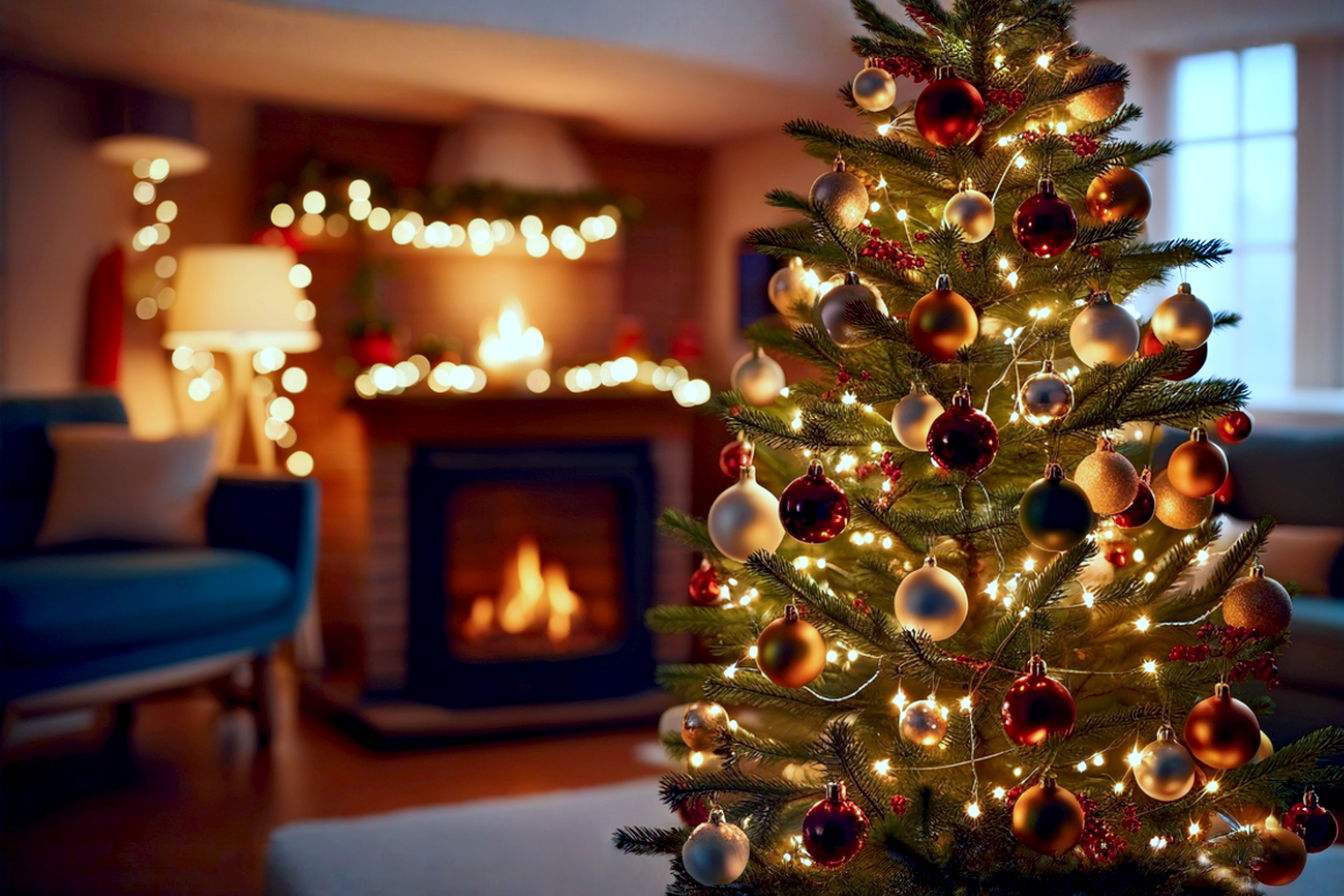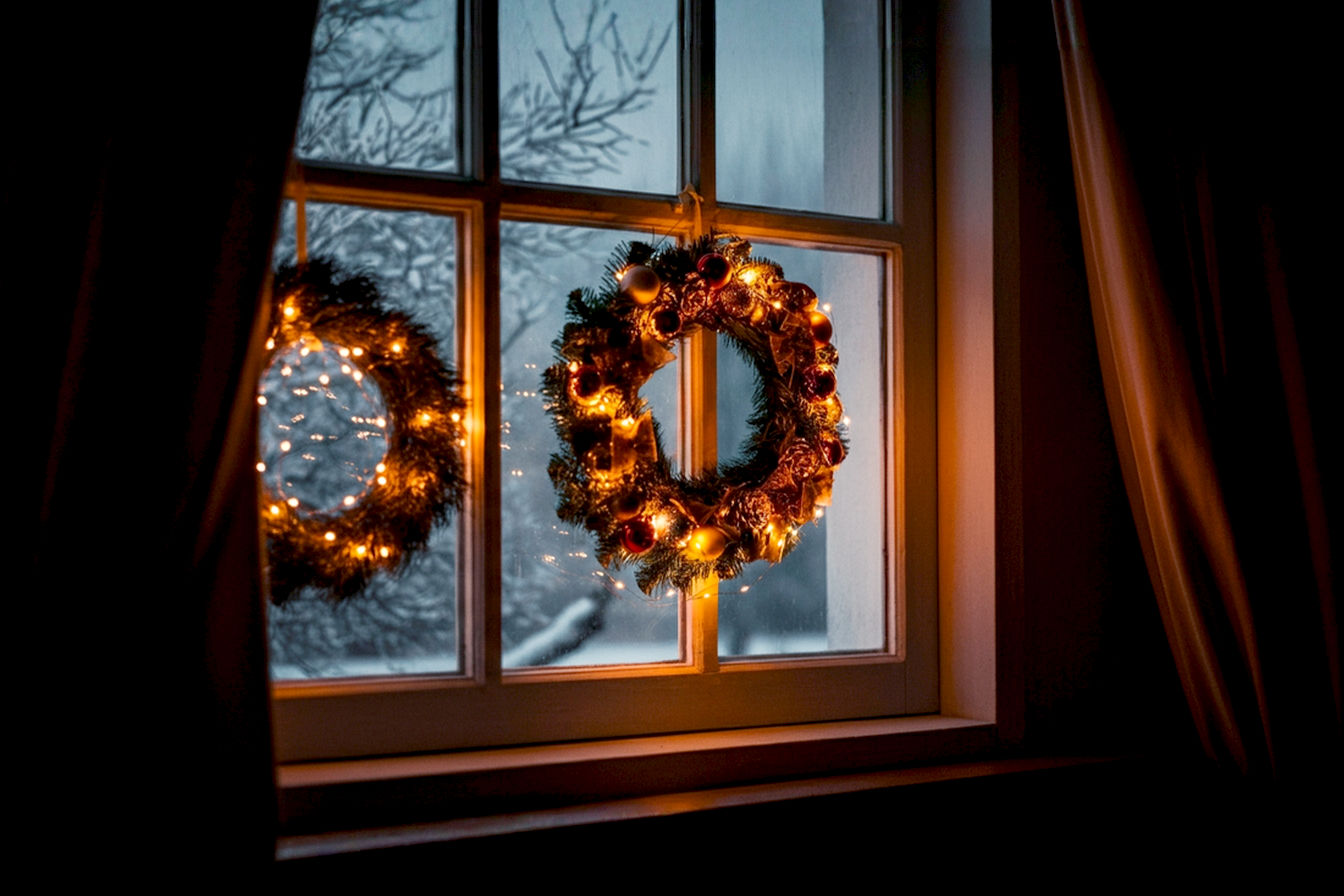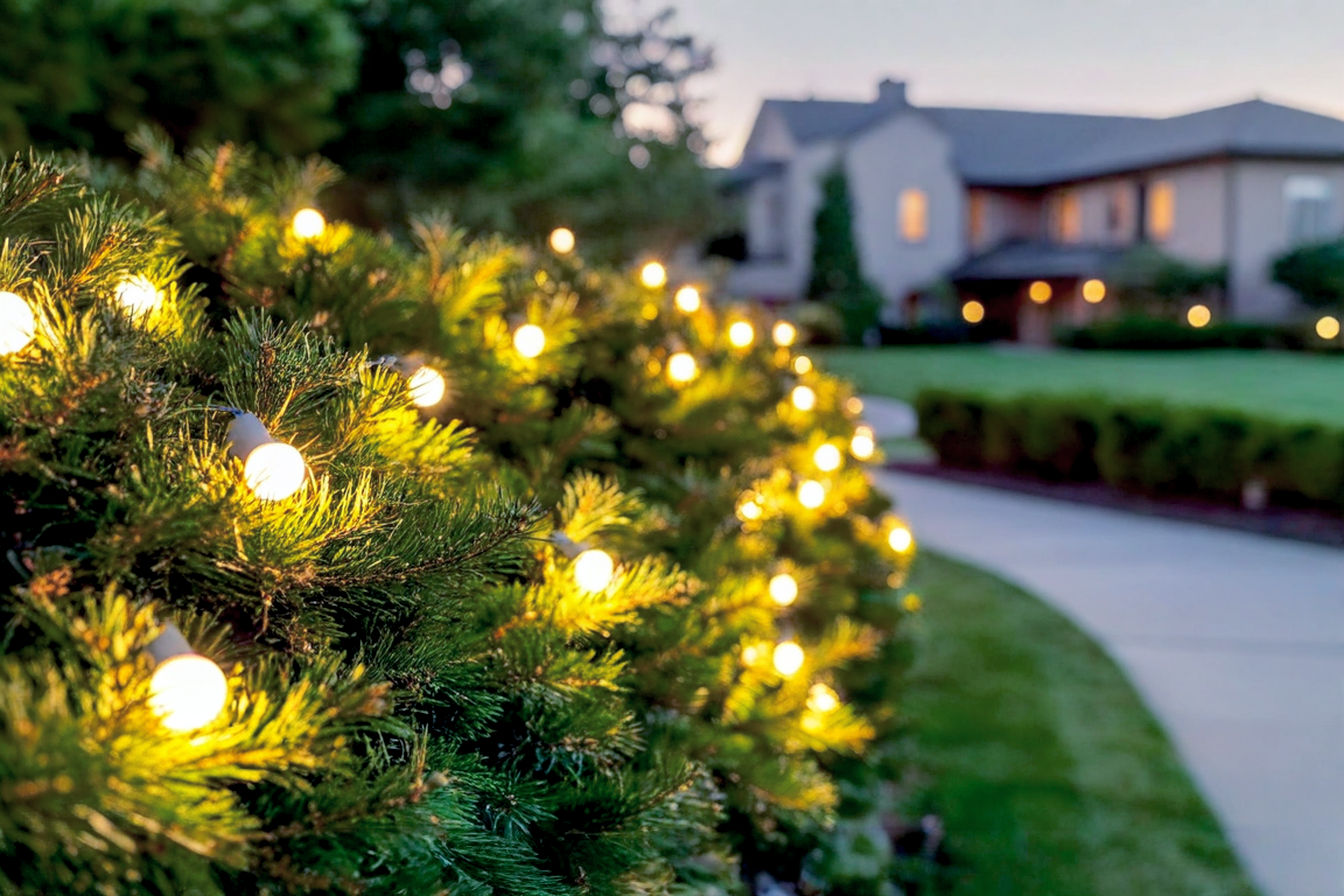This post may contain affiliate links. If you make a purchase through these links, we may earn a commission at no additional cost to you.
The holiday season brings joy, warmth, and, for many, a beautiful Christmas tree that serves as the heart of festive celebrations. But once the carols fade and the New Year arrives, a common dilemma emerges: how do you properly store your artificial Christmas tree until next year? Simply shoving it back into its original flimsy box often leads to crushed branches, tangled lights, and a frustrating setup experience the following season. It’s a post-holiday storage headache that many of us face.
Proper Christmas tree storage isn’t just about tidiness; it’s about preserving your investment, maximizing your home’s valuable space, and ensuring a smooth, stress-free start to future holiday seasons. Imagine pulling out a tree that’s still perfectly shaped, with lights intact and no dusty, flattened branches. That’s the promise of smart storage.
This comprehensive guide will walk you through everything you need to know about outsmarting clutter and choosing the best Christmas tree storage solutions for your home. We’ll explore why smart storage is crucial, what factors about your tree influence your storage needs, and delve into the top storage options available—from specialized bags to hard-sided containers. You’ll also get essential tips for preparing your tree for its long winter nap, ensuring it stays pristine year after year.
Why Smart Christmas Tree Storage Is a Game-Changer
Don’t underestimate the power of good Christmas tree storage. It’s more than just putting things away; it’s a strategic move that pays off in multiple ways. Investing a little time and effort now can save you significant headaches and expenses down the line.
Protecting Your Investment: Longevity and Appearance
Your artificial Christmas tree is an investment, often costing hundreds or even thousands of dollars. Leaving it exposed or improperly stored can drastically shorten its lifespan and diminish its appearance.
First, proper storage prevents dust, dirt, and pests from accumulating on your tree. Over time, dust can dull the needles and make the tree look old and tired. Pests, like spiders or even rodents, can find a cozy home in an unprotected tree, potentially damaging branches or leaving unwanted surprises. A sealed storage solution acts as a barrier, keeping your tree clean and critter-free.
Second, smart storage is crucial for maintaining branch shape and needle integrity. When branches are crushed or bent out of shape, they can become permanently deformed. This means next year, you’ll spend extra time trying to fluff and reshape a tree that just doesn’t look as full or vibrant as it once did. High-quality storage solutions are designed to support the tree’s structure, preventing this kind of damage.
Finally, for pre-lit Christmas trees, proper storage is vital for protecting the delicate wiring and bulbs. Tangled cords or squashed lights can lead to broken bulbs, frayed wires, or even entire sections of lights going out. A good storage system minimizes movement and pressure on these components, ensuring your lights shine brightly for many seasons to come.
Reclaiming Your Space: Maximizing Storage Efficiency
One of the biggest benefits of smart storage is how it helps you reclaim valuable space in your home. Christmas trees, especially larger ones, can be incredibly bulky. Shoving them into a corner of the garage or a packed closet creates clutter and makes it harder to access other items.
Effective storage solutions are designed to be more compact or to utilize space more efficiently. For instance, some options allow for vertical storage, taking advantage of height rather than floor space. Others are designed to compress the tree sections, making them smaller and easier to tuck away. By using purpose-built storage, you can free up precious real estate in your closets, attics, basements, or storage units, making your home feel less cluttered and more organized.
Simplifying Next Year’s Setup: Ease and Convenience
Think about the joy of decorating your tree. Now, think about the frustration of untangling a massive knot of lights or wrestling with branches that won’t unfold properly. Proper storage can streamline next year’s setup considerably.
When your tree is stored correctly, its branches are less likely to be tangled or squashed. This means less time spent fluffing and shaping. For pre-lit trees, well-protected wiring means you’re less likely to encounter dead sections or spend hours troubleshooting electrical issues. You can simply pull out your tree, assemble it with minimal fuss, and get straight to the fun part of hanging ornaments. This convenience is a significant advantage, especially during the busy holiday season.
Understanding Your Christmas Tree: What Affects Storage Needs?
Before diving into specific storage solutions, it’s important to understand your particular Christmas tree. Different types, sizes, and features of artificial trees will influence the best storage approach. What works for a slim, unlit 6-foot tree might not be suitable for a sprawling 12-foot pre-lit flocked behemoth.
Tree Type: Artificial vs. Real
While this article focuses on artificial trees, it’s worth a brief mention of the distinction. Real Christmas trees are biodegradable and are typically disposed of or recycled after the holidays. They don’t require long-term storage solutions. Our discussion, therefore, will exclusively center on the various challenges and solutions for storing artificial Christmas trees, which are designed for repeated use year after year.
Tree Size and Height: The Bigger, The More Complex
The physical dimensions of your tree are perhaps the most critical factor in determining storage needs.
- Standard Sizes: Artificial trees commonly come in heights like 6 feet, 7.5 feet, 9 feet, and 12 feet or more. A 6-foot tree might easily fit into a duffel bag, while a 12-foot tree will likely require a much larger, specialized container or even multiple storage units.
- Impact on Storage Dimensions and Weight: Taller trees usually have a wider base and more sections, meaning they take up significantly more space even when disassembled. They are also considerably heavier, making features like wheels on storage containers almost essential for ease of transport. Always measure your tree’s disassembled sections to ensure they fit into your chosen storage solution.
Pre-Lit vs. Unlit Trees: Protecting the Electricals
The presence of integrated lighting adds another layer of complexity to storage.
- Special Considerations for Integrated Lighting: Pre-lit trees have delicate wires and bulbs woven throughout the branches. These components are prone to damage if bent sharply, compressed excessively, or tangled. Improper storage can lead to frustrating electrical issues, where entire sections of lights might fail, or the tree might not light up at all next season.
- Preventing Wire Damage and Bulb Breakage: When storing a pre-lit tree, the primary goal is to minimize stress on the wiring. This often means avoiding overly compact storage methods that might pinch or crimp wires. Solutions that allow the tree to retain more of its shape, like vertical storage bags, are often preferred for pre-lit models, as they reduce the need for aggressive compression of branches and their embedded lights.
Flocked Trees: Handling the “Snow”
Flocked trees, with their beautiful, snow-dusted appearance, require particular care during storage to preserve their unique finish.
- Minimizing Shedding and Preserving the Flocking: The “flocking” is typically a synthetic material (often a cellulose-based fiber) applied to the branches to mimic snow. This material can shed if handled roughly or if stored in a way that causes friction between branches. The goal is to minimize contact and compression of flocked surfaces.
- Gentle Handling and Specific Storage Environments: Avoid pulling or tugging on flocked branches. When placing them into storage, try to arrange them so the flocked areas aren’t rubbing against each other or the container walls excessively. Also, flocked trees are more susceptible to moisture damage, which can cause the flocking to clump or even mold. A cool, dry storage environment is paramount for these trees.
Disassembly Method: Sectional vs. Hinged
How your tree is constructed influences how easily it can be packed away.
- Sectional Trees: Most artificial trees come in multiple sections (typically 2-4, depending on height) that stack on top of each other. Each section usually has branches that are either hinged or hook-in. For storage, these sections are separated.
- Hinged Branches: Many modern trees feature hinged branches that are permanently attached to the central pole and simply fold up for storage. These are generally easier to collapse and expand. When storing, you’ll fold the branches upwards, parallel to the pole, and then gently compress them.
- Hook-In Branches: Older or less expensive trees might have individual branches that hook into slots on the central pole. These require more effort to disassemble, as each branch must be removed. While this allows for very compact storage of the pole and individual branches, it also means more pieces to manage and potentially more time spent on setup and takedown.
- The Importance of Careful Breakdown: Regardless of the method, always disassemble your tree systematically. This means starting from the top section and working your way down. For hinged branches, gently fold them up. For hook-in branches, unhook them carefully. Proper disassembly ensures no parts are bent or broken, which is vital for smooth reassembly next year.
Top Christmas Tree Storage Solutions: A Detailed Guide
Choosing the right storage solution can feel overwhelming with so many options available. Let’s break down the most popular and effective methods, examining their benefits, drawbacks, and ideal use cases.
Option 1: Christmas Tree Storage Bags
Christmas tree storage bags are a popular choice due to their flexibility and often lower cost compared to hard containers. They come in various styles, each offering distinct advantages.
Standard Duffel-Style Bags
These are the most common type of Christmas tree storage bag, resembling a large, heavy-duty duffel bag.
- Description: Typically made from durable fabric, these bags feature a long zipper closure and handles for carrying. They are designed to hold disassembled tree sections.
- Pros:
- Cost-Effective: Generally the most affordable storage option.
- Flexible: The soft sides allow for some give, making it easier to fit slightly irregular shapes or to compress branches a bit more.
- Dust Protection: Provides a good barrier against dust and dirt, keeping your tree clean.
- Easy to Store: When empty, they can be folded flat, taking up minimal space.
- Cons:
- Can Be Bulky: Even when compressed, a large tree inside a duffel bag can be awkward and heavy to lift and carry.
- Less Protection: Offers limited protection against crushing or impact damage compared to hard containers. Branches can still get squashed if other items are stacked on top.
- Requires Lifting: Unless it has wheels, you’ll need to lift and carry the full weight of the tree.
- Materials: Most standard duffel bags are made from heavy-duty polyester or polypropylene. These synthetic fabrics are chosen for their tear resistance, water resistance (though not fully waterproof), and durability. A common denier count (a measure of fiber thickness and density) for these bags is around 600D to 900D, indicating a robust weave that can withstand the weight and sharp edges of tree branches.
- Best For: Smaller to medium-sized artificial trees (up to 7.5 feet) that disassemble into manageable sections. They are also suitable for trees where you don’t mind a bit of compression, or if you have ample space where the bag won’t be stacked under heavy items.
Wheeled Christmas Tree Storage Bags
These bags combine the flexibility of a duffel bag with the convenience of wheels, making them ideal for heavier trees.
- Description: Similar to standard duffel bags but equipped with sturdy wheels on one end and often a reinforced handle on the other, allowing you to pull the bag like luggage.
- Pros:
- Easy Transport: The wheels make it significantly easier to move heavy or large trees from your living room to the storage area, reducing strain on your back.
- Good Protection: Often made from thicker, more durable material than basic duffel bags, offering slightly better protection against minor impacts.
- Still Flexible: Retains some of the flexibility of soft-sided bags, allowing for easier packing.
- Cons:
- Higher Cost: More expensive than non-wheeled duffel bags due to the added hardware.
- Still Requires Some Lifting: While you can roll it, you’ll still need to lift one end to engage the wheels, and lift the entire bag to place it on shelves or into a vehicle.
- Can Still Be Bulky: The overall footprint remains large, similar to a standard duffel bag.
- Features: Look for bags with heavy-duty, smooth-rolling wheels (often made of rubber or durable plastic, similar to inline skate wheels) that can handle uneven surfaces. Reinforced handles are crucial, typically stitched multiple times and sometimes padded for comfort. Strong, self-repairing zippers (e.g., #10 coil zippers) are also important to prevent breakage under stress. Some bags also include internal compression straps to help secure the tree sections.
- Best For: Medium to large artificial trees (7.5 feet to 9 feet) or any tree that is particularly heavy. They are excellent for those who need to move their tree a significant distance to storage (e.g., from an upstairs living room to a basement or garage).
Upright/Vertical Christmas Tree Storage Bags
This specialized type of bag allows you to store your tree in an assembled or partially assembled upright position.
- Description: These tall, cylindrical bags are designed to encase a tree that is either fully assembled or has only its top section removed. The tree typically remains on its stand, and the bag zips up around it. Some versions even have a built-in stand.
- Pros:
- Minimal Disassembly: The biggest advantage is that you don’t have to fully take apart your tree, saving a lot of time and effort during both takedown and setup.
- Preserves Shape: Because the tree isn’t compressed horizontally, its branches retain their original shape much better, reducing the need for extensive fluffing next year.
- Ideal for Pre-Lit Trees: Excellent for pre-lit trees as it minimizes stress on the delicate wiring and bulbs, preventing tangles and damage.
- Quick Setup: Next year, simply unzip the bag, remove it, and your tree is ready to decorate.
- Cons:
- Tall and Requires Dedicated Space: These bags are very tall and require a significant amount of vertical storage space (e.g., a tall closet, a corner of a garage with high ceilings). They are not suitable for attics with low eaves.
- Higher Cost: Generally the most expensive type of storage bag.
- Still Requires Lifting (if no wheels): While it saves on disassembly, moving a tall, upright tree can still be challenging if the bag doesn’t have wheels.
- Internal Support Systems: Many upright bags feature an internal pole or frame that provides rigidity and helps the tree stand upright. Some even integrate the tree stand directly into the bag’s base, making it a truly all-in-one solution. The material is typically heavy-duty polyester, often with a waterproof backing to protect against moisture.
- Best For: Pre-lit trees, large trees (up to 9 or 10 feet) where minimal disassembly is desired, and for homeowners who have ample vertical storage space and prioritize ease of setup.
Option 2: Hard-Sided Christmas Tree Storage Containers
For maximum protection and durability, hard-sided containers are an excellent choice. They offer superior crush resistance and pest protection.
Plastic Totes/Bins
These are general-purpose plastic storage bins, often used for various household items, but can be adapted for tree sections.
- Description: Standard rectangular or square plastic bins with snap-on or latching lids. They come in a wide range of sizes.
- Pros:
- Rigid Protection: Provides excellent protection against crushing, impacts, and external pressure.
- Stackable: Most plastic totes are designed to be stackable, allowing you to maximize vertical storage space.
- Pest-Resistant: The sealed nature of the bins helps keep out dust, moisture, and pests.
- Versatile: Can be repurposed for other storage needs if your tree storage requirements change.
- Cons:
- Can Be Heavy and Bulky: When filled with tree sections, larger totes can become very heavy and awkward to move, especially without wheels.
- Less Flexible for Odd Shapes: The rigid shape means you might have to compress branches more to fit them in, potentially damaging them.
- May Not Fit Entire Tree: You might need multiple bins for a single tree, depending on its size and how compactly it disassembles.
- Materials: Typically made from high-density polyethylene (HDPE) or polypropylene (PP), which are durable, impact-resistant plastics. Look for opaque bins to block light, which can help prevent fading over time. Lids with strong, secure latches are essential for a good seal.
- Best For: Smaller artificial trees, individual tree sections, or for storing tree accessories like stands, skirts, and light strands separately. They are also a good choice if you have a very compact tree that disassembles into small, uniform pieces.
Specialized Tree Storage Boxes
These are purpose-built hard containers designed specifically for artificial Christmas trees.
- Description: Often long, rectangular containers, sometimes with internal dividers or straps, and frequently equipped with wheels. They are designed to hold multiple tree sections securely.
- Pros:
- Maximum Protection: Offers the highest level of protection against crushing, impacts, dust, moisture, and pests.
- Organized Storage: Many come with internal features like straps or compartments to keep tree sections separated and secure, preventing shifting and damage.
- Durable: Built to last for many years, resisting wear and tear.
- Often Wheeled: Many models include integrated wheels for easy transport, similar to wheeled bags.
- Cons:
- Expensive: These are typically the most costly storage solution.
- Very Bulky: Even empty, they take up significant space. When filled, they are large and can be heavy, even with wheels.
- Less Flexible: The rigid design means you must fit your tree sections precisely, which might require more compression than desired for delicate branches.
- Features: Look for boxes made from heavy-duty, impact-resistant plastic, often with reinforced corners and strong, secure latches. Internal compression straps are common to hold tree sections firmly in place. Some high-end models might even have foam padding or dedicated slots for each section. Integrated, robust wheels are a standard feature for these large containers.
- Best For: High-value artificial trees, very large trees (9 feet and above) where maximum protection is paramount, and for long-term storage in areas like garages or basements where environmental factors might be a concern. They are an excellent choice if you want to ensure your tree remains in pristine condition for decades.
Option 3: DIY and Alternative Christmas Tree Storage Solutions
If specialized solutions aren’t in your budget or don’t fit your needs, there are some alternative methods, though they often come with compromises.
Original Tree Box
Many artificial trees come in a cardboard box. While convenient initially, these boxes are rarely designed for long-term, repeated use.
- Pros:
- Free: You already have it!
- Custom Fit: It’s designed to fit your specific tree perfectly when new.
- Cons:
- Deteriorates Quickly: Cardboard is not durable. It tears, gets crushed, and absorbs moisture, making it susceptible to mold and attracting pests over time.
- Not Durable: It offers minimal protection against crushing or environmental damage.
- Often Too Small: After the first year, it can be incredibly difficult to get the tree back into its original compact state, especially if branches have fluffed out.
- Reinforcing the Box: If you must use the original box, reinforce it with heavy-duty packing tape, especially along seams and corners. Consider wrapping tree sections in plastic sheeting or old blankets before placing them in the box for added protection. However, this is generally a temporary or last-resort solution.
Shrink Wrap/Plastic Sheeting
This method involves tightly wrapping your tree sections in plastic.
- Pros:
- Compact: Allows for significant compression, making the tree sections very small.
- Dust Protection: Provides a good barrier against dust.
- Cons:
- No Crush Protection: Offers absolutely no protection against crushing or impact.
- Not Breathable: Traps any residual moisture, which can lead to mold or mildew, especially if stored in a humid environment.
- Can Damage Flocking: The tight wrap can pull off or damage the delicate flocking on snow-dusted trees.
- Difficult to Unwrap: Can be a chore to unwrap next year, and the plastic often tears, making it single-use.
- Best For: Short-term, very compact storage in a climate-controlled, dry environment, or as an inner layer of protection within a more robust container. It’s generally not recommended as a primary long-term storage solution.
Garment Bags/Wardrobe Boxes
These are designed for clothing but can be adapted for slim or smaller trees.
- Pros:
- Vertical Storage: Allows for upright storage, similar to specialized vertical tree bags, which can be good for preserving shape.
- Good for Slim Trees: Particularly suitable for pencil or slim-profile trees that don’t have a wide base.
- Cons:
- Less Sturdy: Not designed to bear the weight or bulk of a tree, so they can tear or collapse.
- Not Designed for Trees: May not offer adequate protection for branches or lights.
- Limited Size: Only suitable for smaller or very narrow trees.
- How to Adapt Them: For a garment bag, you might need to insert a sturdy central pole (like a PVC pipe) to provide support. For a wardrobe box, reinforce the bottom and sides with extra cardboard or tape. You’ll still need to disassemble the tree into sections that fit the bag/box’s height. This is a highly improvised solution and not recommended for valuable or large trees.
Essential Tips for Optimal Christmas Tree Storage
Beyond choosing the right container, how you prepare your tree for storage is just as important. Following these tips will ensure your tree stays in top condition year after year.
Clean Before You Store
Before packing your tree away, take a few minutes to clean it. This simple step makes a big difference.
- Removing Dust, Debris, and Old Decorations: Over the holiday season, your tree collects dust, pet hair, and sometimes even remnants of glitter or forgotten ornament hooks. Use a soft brush, a feather duster, or a vacuum cleaner with a brush attachment on a low setting to gently remove any surface debris. Make sure all ornaments, hooks, and tinsel are completely removed. Even tiny bits of tinsel can cause issues with pre-lit wires over time.
- Gentle Cleaning Methods: For more stubborn dirt or sticky spots, lightly dampen a cloth with plain water (no harsh chemicals) and gently wipe the affected area. Allow the tree to air dry completely before packing. Any residual moisture can lead to mold, mildew, or a musty smell during storage.
Disassemble Carefully and Systematically
The way you take your tree apart directly impacts its condition next year.
- Labeling Sections: Most artificial trees come in numbered sections (e.g., A for top, B for middle, C for bottom). If yours aren’t labeled, use masking tape and a marker to label them yourself. This makes reassembly incredibly fast and prevents confusion. You might also label which way is “front” if your tree has a specific orientation.
- Wrapping Cords for Pre-Lit Trees: For pre-lit trees, carefully unclip any connections between sections. Gently coil the electrical cords and secure them with twist ties or Velcro straps. Avoid wrapping them tightly around branches, as this can strain the wires. Consider using small, clear plastic bags to store the power adapters or foot pedals with their respective sections.
- Compressing Branches Without Breaking: When folding hinged branches, gently push them upwards towards the central pole. For hook-in branches, remove them one by one. The goal is to compress the branches enough to fit into your storage solution without bending them past their natural breaking point or causing permanent creases in the needles. Don’t force branches into a space that’s too small.
Protecting Pre-Lit Trees
Pre-lit trees offer convenience but require extra care during storage to maintain their functionality.
- Avoiding Kinks and Breaks in Wires: The most common cause of pre-lit tree failure is damaged wiring. When packing, ensure that wires are not sharply bent, pinched, or stretched. If using a soft bag, try to arrange sections so the wires are not at stress points where the bag might be compressed. Vertical storage bags are particularly good for pre-lit trees because they minimize branch compression.
- Testing Lights Before Storage: Before you pack your tree away, plug it in one last time and test all the lights. If a section isn’t working, try to troubleshoot it now (e.g., replace a fuse or a single bulb) rather than discovering the issue next year when you’re in a hurry. This also helps you confirm the lights are in working order before they go into storage.
- Using Dedicated Light Storage Solutions: If your tree lights are removable (not integrated), consider storing them separately in a specialized light storage reel or box. This prevents tangles and protects the bulbs from breakage.
Preserving Flocked Trees
Flocked trees are beautiful but delicate.
- Minimal Handling: The less you touch the flocked areas, the better. When disassembling, try to handle the branches by their wire frames or the central pole rather than directly gripping the flocked needles.
- Avoiding Moisture and Extreme Temperatures: Moisture is the enemy of flocking, as it can cause it to clump, yellow, or even grow mold. Extreme heat can also cause the flocking to become brittle or shed excessively. Store flocked trees in a cool, dry, and stable environment.
- Using Breathable Covers: While hard containers offer good protection, some flocked tree owners prefer breathable fabric covers (like a large, soft sheet or a specialized breathable tree bag) if the tree is stored in a relatively clean, indoor environment. This allows for air circulation while still providing dust protection and minimizing friction on the flocking.
Choosing the Right Storage Location
Where you store your tree is just as important as how you store it.
Ideal Environments
- Cool, Dry, Dark, Stable Temperature: The best storage locations offer consistent conditions. A cool environment (ideally between 50-75°F or 10-24°C) prevents materials from degrading too quickly. Dryness is crucial to prevent mold, mildew, and rust on metal components. Darkness helps prevent fading of the tree’s colors over time.
- Basements: Often cool and dark, basements can be good if they are dry and well-ventilated. Use dehumidifiers if prone to dampness.
- Climate-Controlled Storage Units: These are excellent options if you have limited space at home or a very expensive tree. They offer optimal temperature and humidity control.
- Spare Rooms/Closets: If you have the space, an unused bedroom closet or a dedicated storage closet within your main living area provides the most stable and ideal conditions.
Avoid These Locations
- Attics: Attics experience extreme temperature fluctuations (very hot in summer, very cold in winter) and often high humidity. These conditions can degrade plastic, warp metal, dry out or melt flocking, and damage electrical components. They are generally the worst place to store an artificial tree.
- Garages: While better than attics, garages are still prone to temperature swings, humidity, dust, and pests. If you must store your tree in a garage, use a hard-sided, sealed container and consider adding desiccants and pest repellents. Keep it off the concrete floor if possible, perhaps on a pallet or shelving unit, to prevent moisture wicking.
- Direct Sunlight: Avoid storing your tree where it will be exposed to direct sunlight, even through a window. UV rays can cause the needles to fade and become brittle over time.
Adding Desiccants and Pest Repellents
For an extra layer of protection, especially in less-than-ideal storage environments, consider these additions.
- Silica Gel Packets for Moisture Control: These small packets absorb moisture from the air. Place a few inside your tree storage bag or container, especially if you live in a humid climate or store your tree in a basement or garage. Replace them annually.
- Cedar Blocks or Natural Repellents for Pests: Cedar wood is a natural insect repellent. Place a few cedar blocks or chips inside your storage container to deter moths, spiders, and other common household pests. Alternatively, cotton balls with a few drops of peppermint oil or lavender oil can also act as natural deterrents. Avoid chemical mothballs, as their strong odor can permeate the tree and be difficult to remove.
Advanced Considerations for Large or Unique Trees
Sometimes, standard solutions just don’t cut it. For very large, unusually shaped, or high-value trees, you might need to think outside the box.
Custom Storage Solutions
When off-the-shelf options don’t meet your needs, a custom approach might be necessary.
- When Off-the-Shelf Options Aren’t Enough: If you have a tree that’s exceptionally tall (e.g., 15 feet or more), unusually wide, or has a unique design that makes standard disassembly difficult, you might struggle to find a suitable pre-made bag or box. This is where custom solutions come into play.
- Professional Storage Services: For very large or high-value trees, some specialized storage companies offer climate-controlled, secure storage. They will often pick up, store, and deliver your tree, providing a completely hands-off solution. This is an expensive option but can be worth it for commercial-grade trees or those who lack any suitable home storage space.
- DIY Custom Builds: For the handy homeowner, building a custom wooden crate or a PVC pipe frame with a heavy-duty fabric cover can be an option. This allows you to tailor the dimensions precisely to your tree, offering bespoke protection. This approach requires woodworking or crafting skills and a significant time investment.
Modular Tree Storage
For extremely large trees, breaking them down into even smaller, more manageable units can be beneficial.
- Storing Sections Individually for Very Large Trees: Instead of trying to cram all sections of a 12-foot tree into one massive bag, consider using multiple smaller bags or bins. For example, the top section might go into one bag, the middle two sections into another, and the bottom section into a third. This makes each individual unit lighter and easier to handle.
- Benefits for Handling and Space: This modular approach significantly reduces the weight and bulk of any single storage item, making transport and placement much easier. It also allows for more flexible storage arrangements, as smaller units can be tucked into various available spaces that a single, giant container couldn’t fit. You can stack smaller bins more effectively or slide them into tighter spots.
Integrating Tree Storage with Holiday Decor Storage
Thinking about your tree storage as part of a larger holiday decor organization system can lead to greater efficiency.
- Creating a Unified Storage System: Instead of haphazardly storing items, plan out a dedicated holiday storage zone. This could be a specific closet, a section of your basement, or a corner of your garage. Group similar items together.
- Labeling and Inventory: Regardless of your storage solution, label everything clearly. Use large, legible labels on the outside of bags and bins. Include details like “Christmas Tree – Top Section,” “Christmas Tree – Middle Section,” “Tree Stand,” etc. Consider creating a simple inventory list of all your holiday decor, noting where each item is stored. This makes finding things next year a breeze and helps you avoid buying duplicates. Transparent bins can also help you quickly identify contents without opening them.
Conclusion
The post-holiday cleanup doesn’t have to be a dreaded chore, especially when it comes to your artificial Christmas tree. By investing in the right storage solution and following a few simple preparation steps, you can significantly extend the life of your tree, protect its appearance, and reclaim valuable space in your home.
Whether you opt for the robust protection of a hard-sided container, the convenience of a wheeled bag, or the time-saving benefits of an upright storage solution, choosing wisely will transform your future holiday seasons. Say goodbye to squashed branches and tangled lights, and say hello to a perfectly preserved tree, ready to bring joy year after year, all while keeping your home wonderfully clutter-free. Make this the year you outsmart clutter and secure your festive future!






